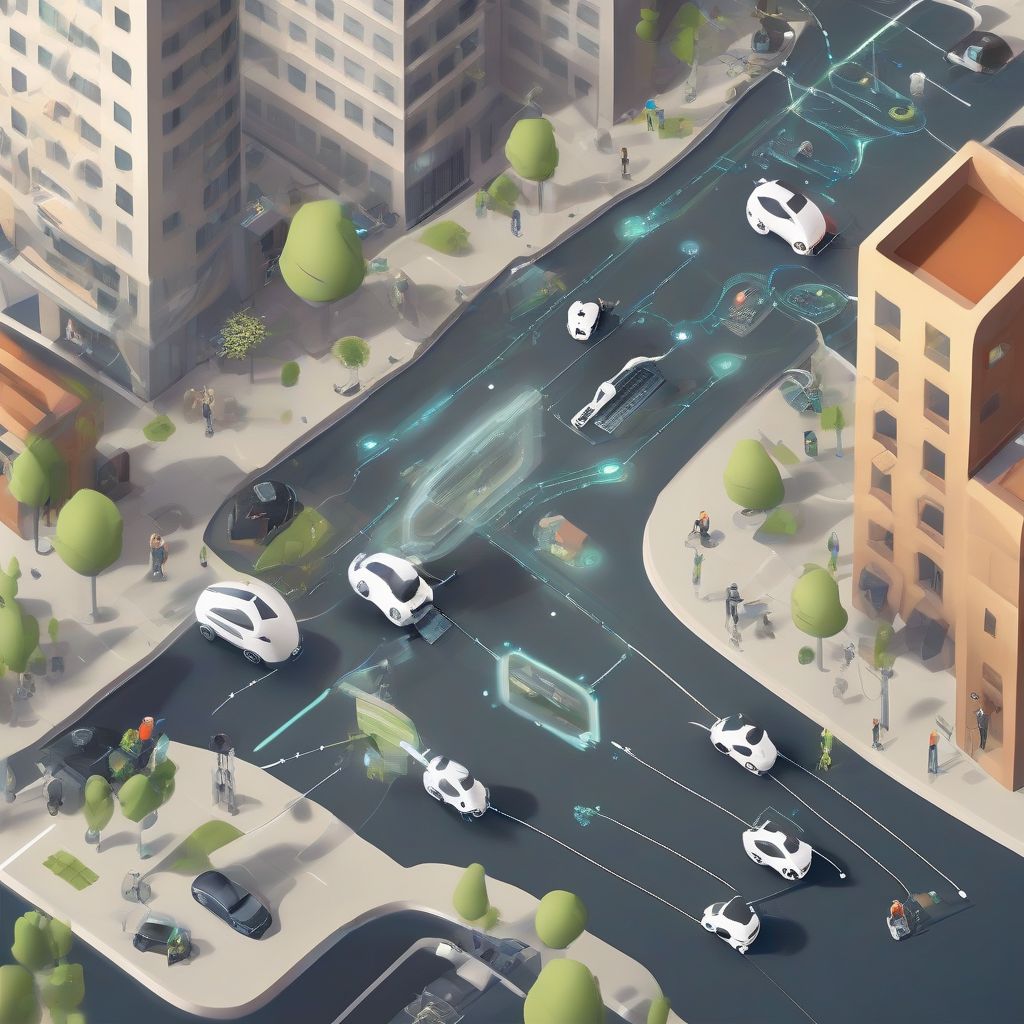Imagine a world where complex tasks are seamlessly orchestrated by intelligent systems, freeing humans to focus on creativity, innovation, and strategic decision-making. This is not a scene from a science fiction novel; this is the future being shaped by the rapid advancements in autonomous system integration.
From self-driving cars navigating urban landscapes to sophisticated robots collaborating in smart factories, autonomous systems are poised to revolutionize industries and redefine our relationship with technology. But what are the key trends driving this revolution, and how will they impact our lives in the years to come?
The Convergence of Technologies: Fueling the Autonomous Revolution
The rise of autonomous systems is not driven by a single technological breakthrough but by the powerful convergence of several key technologies:
1. Artificial Intelligence (AI) and Machine Learning (ML)
AI and ML are the brains behind autonomous systems, enabling them to perceive, learn, reason, and make decisions without human intervention. Through algorithms that mimic human cognitive functions, these systems can analyze vast amounts of data, adapt to changing environments, and continuously improve their performance over time.
2. Internet of Things (IoT) and 5G Connectivity
Autonomous systems rely on seamless connectivity to collect data, communicate with each other, and access cloud-based resources. The proliferation of IoT devices and the rollout of 5G networks are providing the necessary infrastructure for widespread autonomous system deployment, enabling real-time data exchange and low-latency communication.
3. Advanced Sensors and Perception Technologies
Autonomous systems perceive the world through a sophisticated array of sensors, including cameras, LiDAR, radar, and ultrasonic sensors. These sensors provide rich environmental data, enabling the systems to navigate complex environments, detect and avoid obstacles, and interact safely with their surroundings.
 Autonomous Systems Integration
Autonomous Systems Integration
Key Trends Shaping the Future of Autonomous System Integration
The future of autonomous system integration is being shaped by several key trends, each with the potential to disrupt industries and reshape our world:
1. Edge Computing and Decentralized Intelligence
As autonomous systems become more complex, there’s a growing need to process data closer to the source to reduce latency and enhance real-time decision-making. Edge computing, which brings computation and data storage closer to the edge of the network, is emerging as a critical enabler for autonomous system integration, allowing for faster response times, increased reliability, and reduced dependence on centralized cloud infrastructure.
2. Interoperability and Open Standards
For autonomous systems to work together effectively, they need to be able to communicate and share data seamlessly, regardless of their manufacturer or underlying technology. The development of open standards and interoperability protocols is crucial to ensure that different autonomous systems can “speak the same language” and collaborate efficiently, fostering a more integrated and interconnected ecosystem.
3. Cybersecurity and Trust
As autonomous systems become more integrated into our lives, ensuring their security and reliability becomes paramount. Robust cybersecurity measures are essential to protect these systems from malicious attacks, data breaches, and unauthorized access. Building trust in the safety, security, and ethical use of autonomous systems is crucial for their widespread adoption and acceptance.
4. Human-Machine Collaboration
The future of work will be defined by a new era of collaboration between humans and machines. Autonomous systems will automate repetitive tasks and augment human capabilities, allowing people to focus on higher-level cognitive tasks that require creativity, critical thinking, and emotional intelligence. This collaborative approach will redefine job roles, enhance productivity, and unlock new opportunities for innovation.
5. Ethical Considerations and Societal Impact
The rise of autonomous systems raises important ethical and societal considerations, such as job displacement, algorithmic bias, and the potential for misuse. Addressing these concerns proactively through robust regulations, ethical frameworks, and ongoing societal dialogue will be crucial to ensuring that these technologies are developed and deployed responsibly, maximizing their benefits while mitigating potential risks.
Conclusion: Embracing the Transformative Potential of Autonomous Systems
The integration of autonomous systems is poised to revolutionize industries, redefine the way we live and work, and unlock unprecedented opportunities for progress. By embracing the key trends shaping this technological revolution and addressing the ethical and societal challenges they present, we can harness the power of autonomous systems to create a future where technology empowers human potential and drives positive change. As we stand on the cusp of this exciting new era, the possibilities are limitless.
What are your thoughts on the future of autonomous systems? Share your insights and join the conversation below.
[amazon bestseller=”autonomous systems”]
